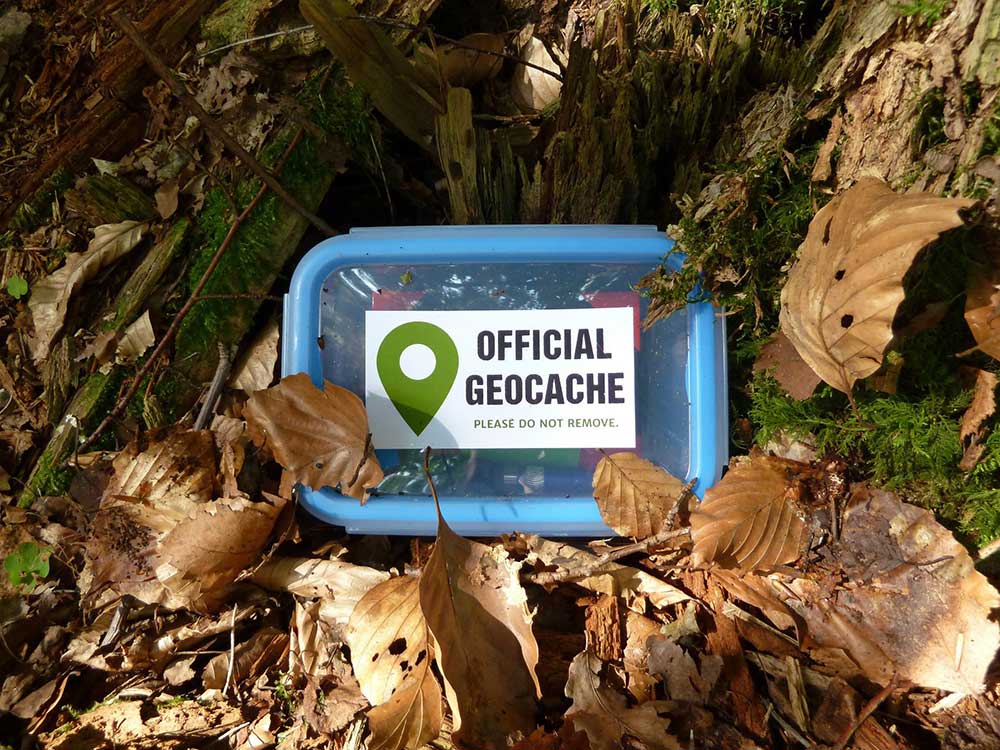GEOCACHING IS FUN FOR YOUNG AND OLD
We’d been searching for several minutes without success. According to the app, we had to be right on top of it, but it was just nowhere to be found. Suddenly, one of our sons shouted, “Here it is!” as he pulled an old ammo can from behind a fallen tree.
Inside was a small notebook, a few pens, and a smorgasbord of trinkets, from tiny figurines to Mardi Gras beads. We’d found the geocache!
Geocaching has been around for about 20 years now. The term was coined back in 2000 and is a combination of “geo,” referring to earth, and “cache,” a hidden stash of some sort. The concept is similar to a scavenger hunt or even a game of hide and seek, albeit on a global scale.
HOW IT WORKS
The first step is to download the Geocaching app and create an account. This is free, though there are paid premium accounts that offer several benefits, such as access to exclusive geocache locations. You can also use their website, Geocaching.com, to search for cache locations in your area or an area where you’re traveling.
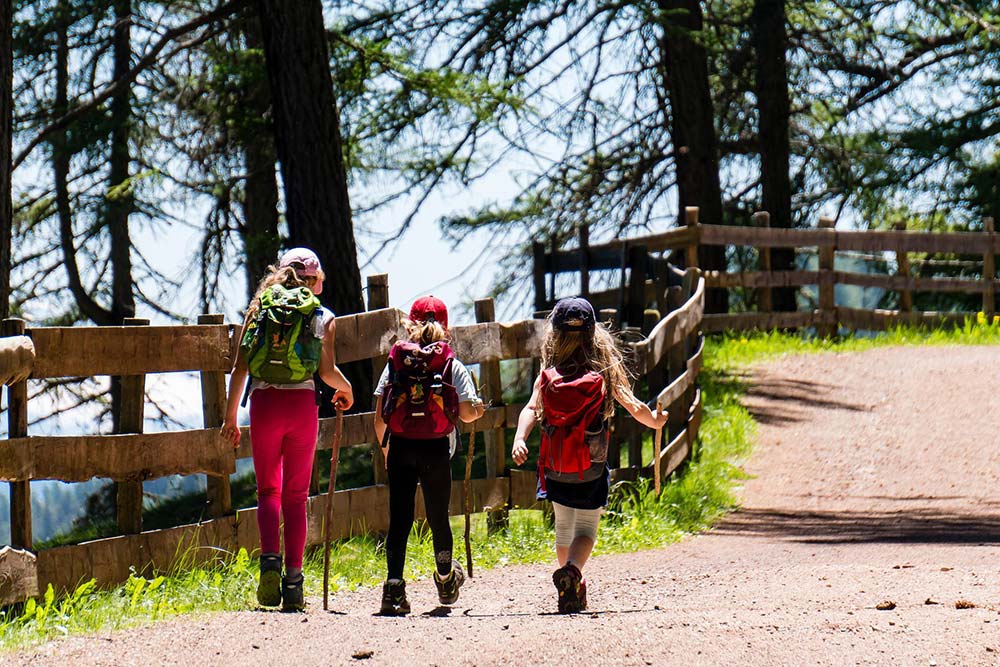
Once you’ve identified a cache to find, you’ll load it on the app and head in that direction, using the app to narrow your search as you get closer. It works with your phone’s GPS to track where you are in relation to the cache.
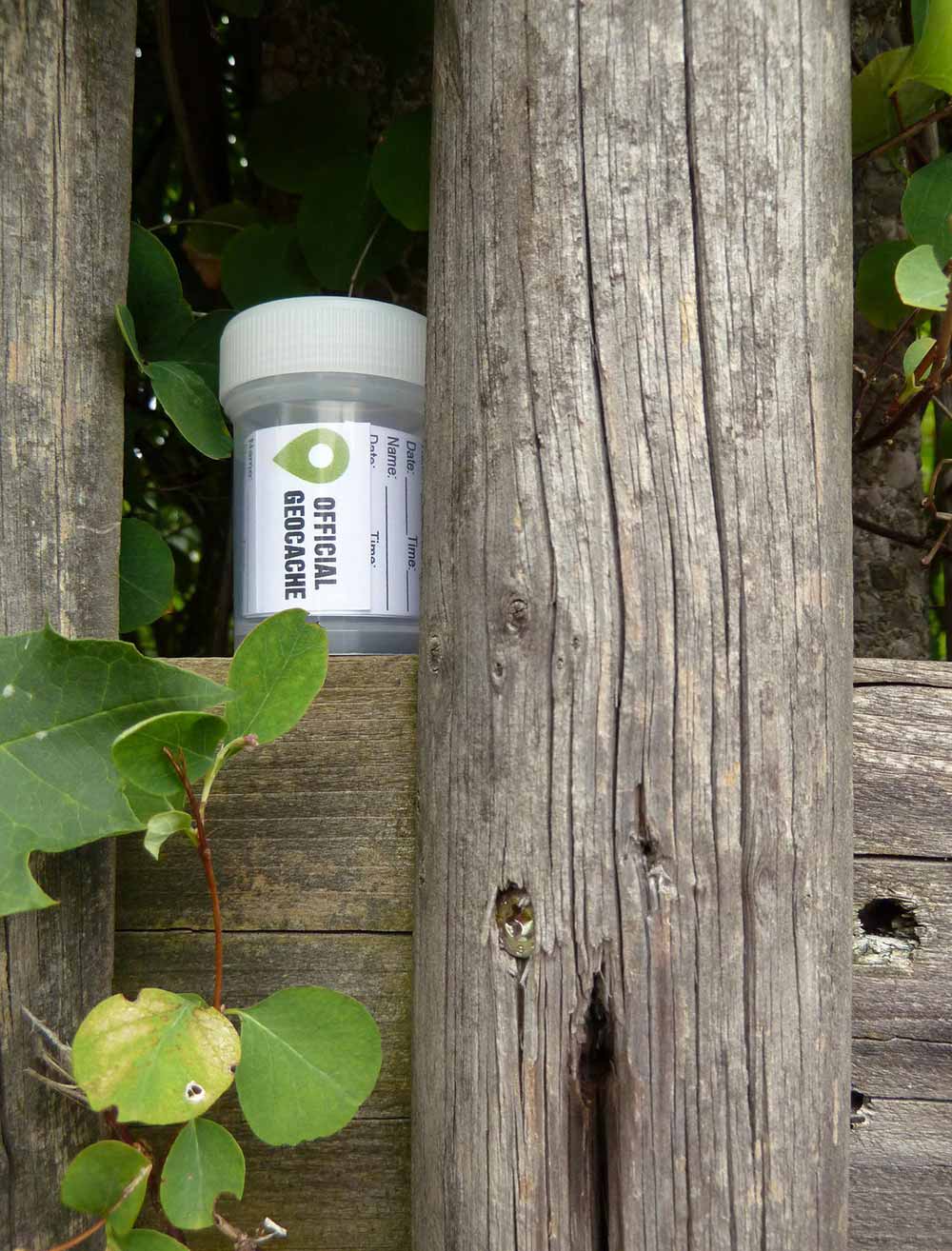
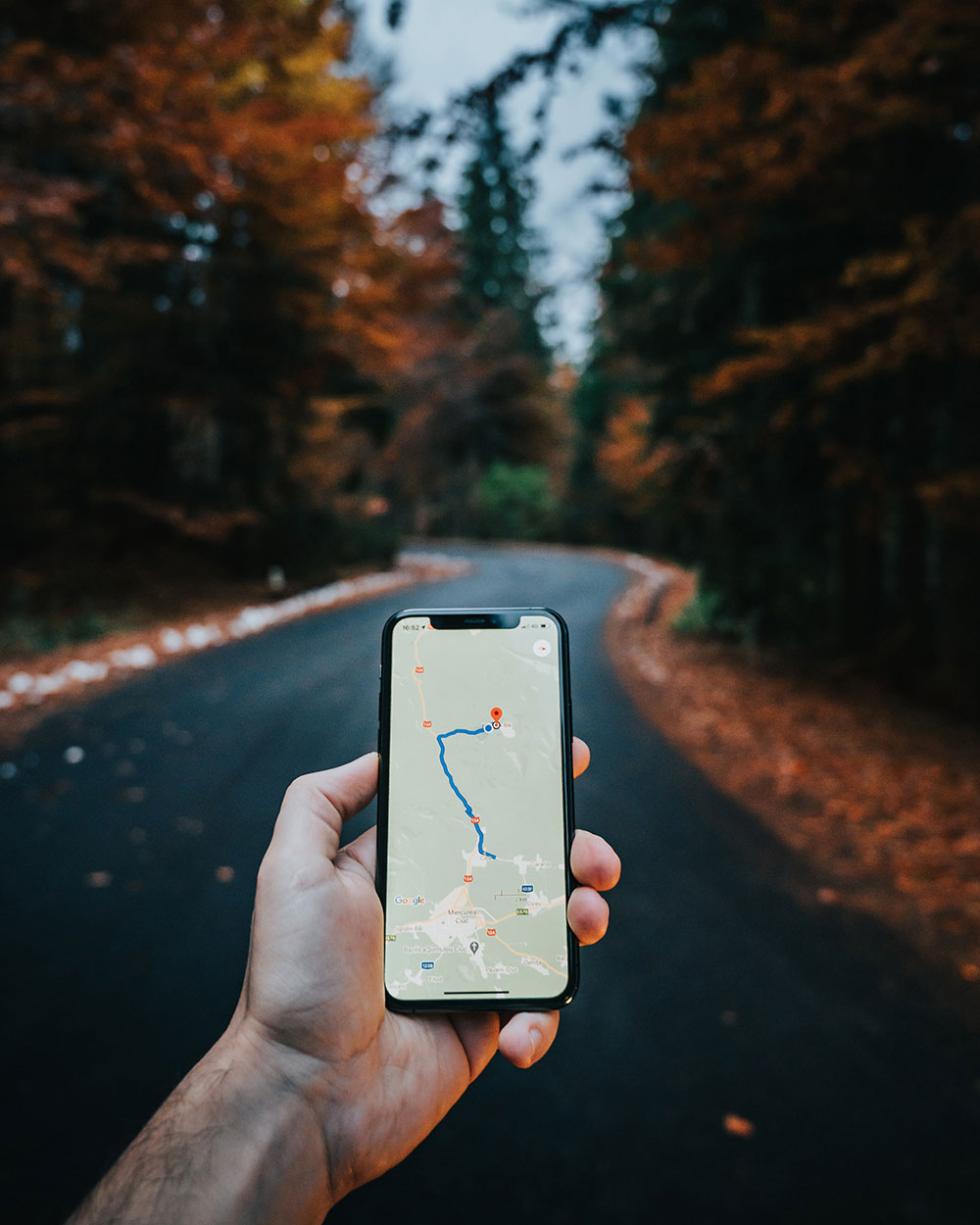
As you zero in on the location, you might consult the app’s listing for the cache, as it may give you a hint about where to look, such as “it is hidden near a notably large tree.” The listing should also indicate the approximate size of the cache. Here are examples of each standard size:
- Micro: 35mm film canister, prescription bottle
- Small: sandwich bag or Otter Box
- Regular: ammo box or shoe box
- Large: five-gallon bucket
If the hunt takes you away from an established trail, mark where you leave that trail as a waypoint. This will help you find your way back, just in case you end up way off the trail. As you zero in on the location, pay close attention to the area. Look for anything that might seem out of place, such as a pile of rocks or a log that’s sitting weird. Imagine you were the one hiding the cache. Where would you put it?
THE CACHE
People use a wide range of containers for these, from ammo cans and plastic food storage boxes to peanut butter jars and old thermoses. Basically, anything that is reasonably weatherproof and waterproof will work, provided it can be opened and closed fairly easily. The container is often camouflaged, such as with paint or dark tape, so that it is more easily hidden in the field.
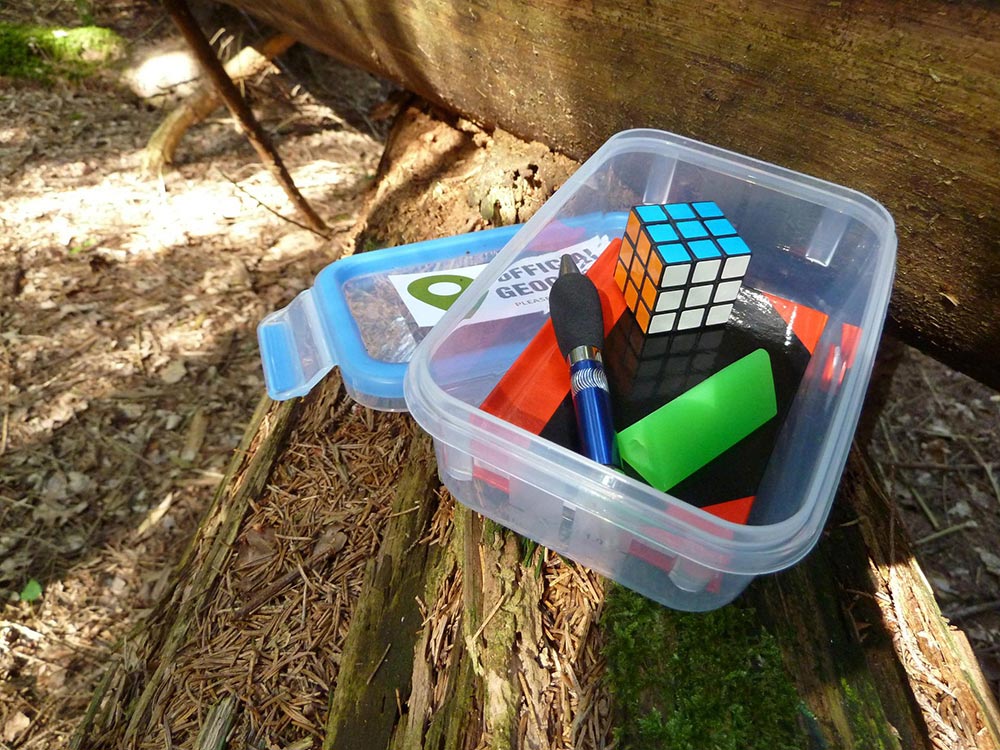
The most important thing inside is a pad of paper, called a logbook, that people can sign once they’ve found the cache. There are official logbooks and such that you can buy, but a pocket-sized spiral notepad works just as well. A writing utensil is also typically added, though experienced hunters usually bring their own, just in case. These are often placed inside a resealable plastic bag as an added layer of protection against moisture.
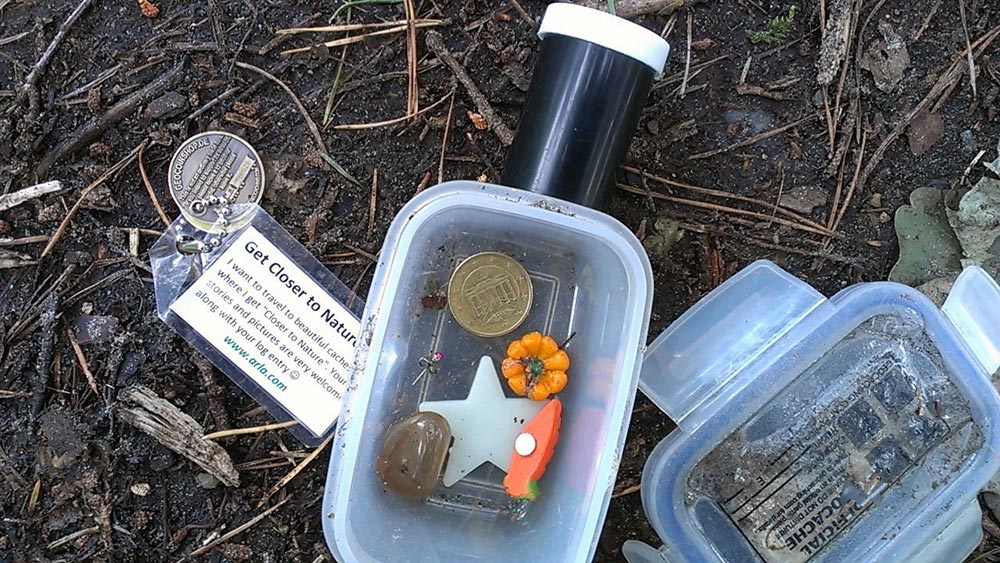
Some caches are barely large enough to hold the logbook, so that’s all you’ll find inside. However, part of the fun of the larger caches is sifting through the prizes, referred to as “SWAG,” which is an acronym for Stuff We All Get. The basic rule is you can only take something if you leave something else of equal or greater value. Some examples of SWAG include:
- Toy soldiers
- Keychains
- Silver dollars
- Buttons
- Polished stones
The contents will obviously change over time, as people find the geocache and swap out the SWAG.
Once the cache is ready, it is hidden somewhere. Probably the most common locations are public parks, though they’ve been in a huge range of places, including fire stations and library shelves. The location coordinates are carefully documented on the GPS device, then uploaded to the Geocaching website. At that point, the hunt begins!
You Found It!
Once you’ve located the cache, carefully remove it from where it sits so you can open it. Be sure to sign the logbook with your name, the date you found it, and maybe add a few words about your search, such as if it was an easy or difficult find.
If there is SWAG inside, feel free to exchange an item for something you’ve brought along to swap. Then, seal it all back up and replace the cache exactly where you found it. If it was covered by rocks or leaves, put rocks or leaves back on top of it. Do the best you can to make the area look like it did before you arrived.
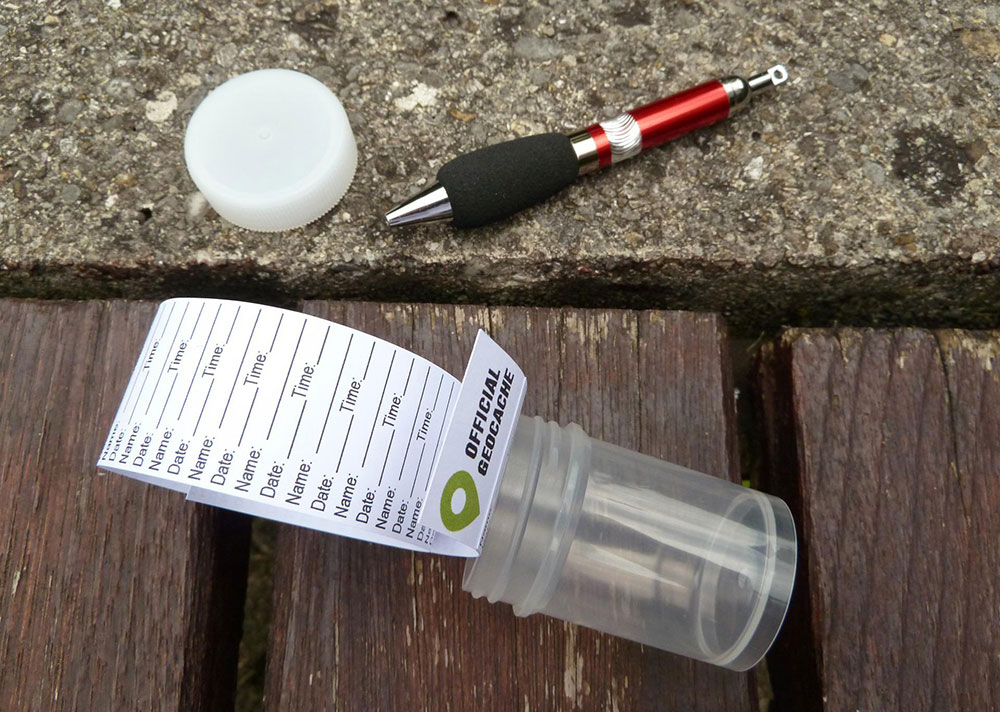
Once you get back home, log into your Geocaching account online and mark the cache as found. You can also leave comments on the cache’s listing, such as noting the condition of the container or the contents. The cache owner will be notified of those remarks and they can take whatever action they feel might be necessary, such as swapping out the container or replacing a damaged logbook.
HINTS AND TIPS
As you search cache listings for a likely candidate, pay attention to the ratings for difficulty and terrain. The difficulty refers to how well the cache is hidden and thus how hard you’ll need to search to find it. The terrain is, well, the topography of the cache’s location. When you’re just starting out, you might want to stick to caches that have low ratings for difficulty and terrain, so that you don’t end up frustrated and exhausted.
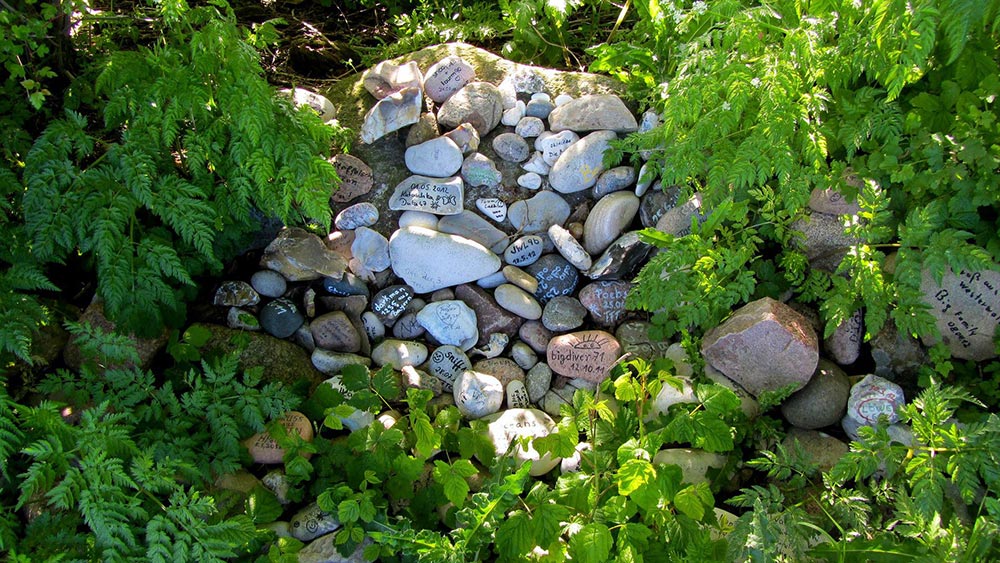
Caches that mention nano-size containers are exceptionally small, such as fake bolts that screw apart. You might want to wait on those until you have a few hunts under your belt. There are also multi-cache hunts, where the owner has hidden several caches in close proximity, often with some sort of theme.

It is recommended that you don’t hide a cache until you’ve located at least 20 caches yourself. The idea is to gain plenty of experience on the hunting side of things first. Pay attention to how others hide their caches and how they write up the listings. Make note of the hunts you particularly enjoyed and why they were so fun, so that you can try to incorporate those elements in your own hide.
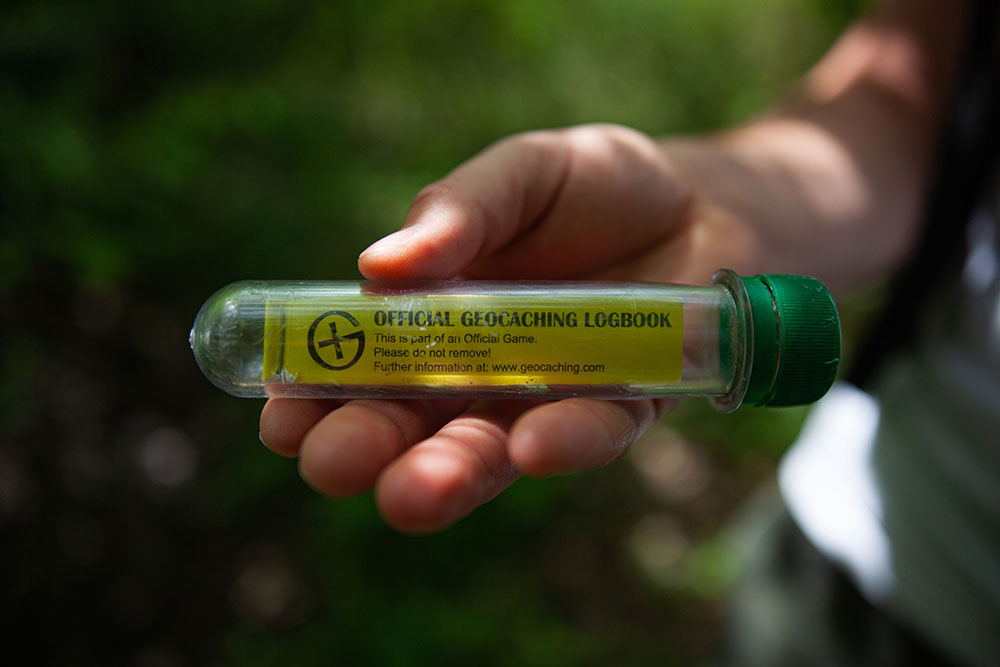
Bear in mind that many people hide a cache in a location that is special to them in some way, such as they feel the area is especially beautiful or eye-catching. When you’re on the hunt, it can be easy to get caught up in the thrill, but be sure to take a moment or two to appreciate the scenery. Someone wanted you to see it.
TRACKABLES REALLY GET AROUND
Trackables are a special kind of SWAG that can be found in caches. They are sold on the Geocaching.com website and come in a dizzying array of shapes and sizes, from coins to charms and more. Each one will have a unique code printed on it. These are sort of like movable playing pieces in the game of geocaching.
If you find a trackable, you’re supposed to take it with you and log the location on the Geocaching website here: www.Geocaching.com/track. Then, within a couple of weeks, the trackable is to be hidden in a new cache location. The owner of the trackable can watch as it gets moved around.
SOURCES FOR SWAG
When you head out to go geocaching, it is a good idea to bring some SWAG items with you, so that you can claim your prize once you’ve found a cache. Here are some great places to buy inexpensive items for SWAG.
Dollar stores: they have all manner of small toys and knickknacks.
Fast food restaurants: the toys they hand out with kids’ meals are perfect.
Oriental Trading: this is the same place many carnivals buy their prizes and you can get a ton of goodies fairly cheap. Check their Toys & Games section. Their website is orientaltrading.com.
American Science and Surplus: you can not only find trinkets and doodads for SWAG, but all manner of containers for when it comes time to hide your own cache. Fair warning: you could spend hours perusing their incredible array of offerings. They’re online at sciplus.com.
A version of this article first appeared in the June 2022 issue of American Outdoor Guide Boundless.


